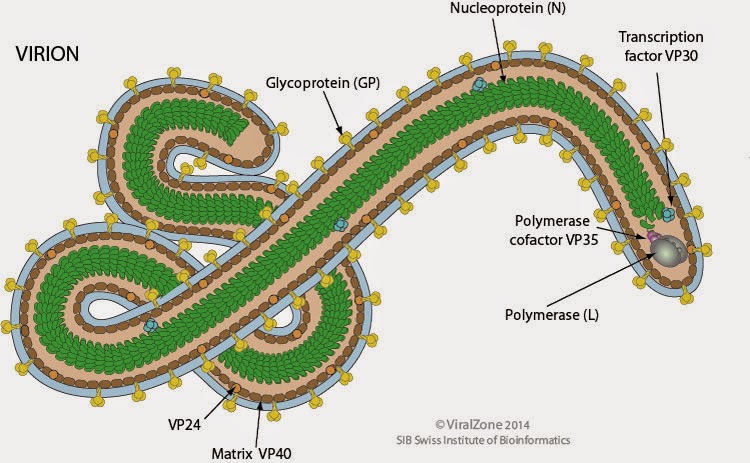In recent months, Ebola
has moved from a winning disease on the popular Plague Lab and Epidemic phone
apps to a very serious global health issue. According to the Center for Disease
Control (CDC), as of November 11, 2014, the total cases of the Ebola virus
totaled 14413; 8920 of those were confirmed laboratory cases, and 5177
constitute total deaths. Though there have been a few well-documented cases in
the United States and Spain, the vast majority of these cases have occurred in
West Africa, in the countries of Guinea, Sierra Leone, Liberia, and Mali.
Many
reasons can be cited for the spread of the Ebola. West Africa lacks proper
infrastructure, facilities, and resources to handle the disease. In addition,
Ebola doesn’t show symptoms until at least two weeks after contraction of the
disease, and the first symptoms manifest in the same manner symptoms from a common
cold or flu do; by this time, everyone that person has come in contact with has
been exposed to the virus. Further, once the affected have passed away, most
villages do not have proper disposal techniques, and in many areas, burning the
body (the most sanitary and available means of disposal) is seen culturally as
an improper means of burial.
Though
all of the problems mentioned above (and the problems Ebola poses are by no
means limited to those) do not have a panacea, there are things being done to
combat aspects of the unprecedented difficulty Ebola has posed to West Africa
and to the world. In addition to all of the humanitarian and medical aid
needed, aid is also being given in the form of bioinformatics. Bioinformatics
is the field that combines technological methods and software programs in an
effort to develop more tools for understanding biological data. Scientists of
bioinformatics must be versed in computer science, mathematics, and
engineering, amongst other fields.
Dr.
Ketan Patel, of the US Naval Medical Research Center and former postdoctoral fellow
in bioinformatics at the University of North Carolina at Charlotte, has used
his experience in bioinformatics to assist in the establishment of a
high-technology mobile laboratory in Liberia, a project located near a
treatment unit that is supported by the World Health Organization (WHO).
 |
| Ketan Patel in the laboratory separating genomic material. (Photo courtesy of WHO). |
This
laboratory, situated in what was previously an abandoned house of sorts, is
meant to speed up the time for diagnosis. As can be inferred from the earlier
explanation of Ebola symptoms, early diagnosis is key for control. Prior to the
establishment of Patel’s lab, even preliminary Ebola diagnosis took anywhere
from two to five days. Because of the advanced bioinformatics technology in
this fledgling laboratory, results can be rendered in just three to five hours; a significant decrease in time
and the effective elimination of days of potential exposure of Ebola victims to
those uninfected.
To
diagnose, the laboratory follows three steps. First, the Ebola virus within the
sample is inactivated, allowing for safety of testing. Secondly, all genetic
material is extracted from the blood sample- by doing this, doctors can
identify unique ribonucleaic acid (RNA) associated with Ebola. Once this is
identified, copies of the RNA are made through a process called polymerase
chain reaction (PCR). Depending on the prevalence of the virus in the provided
blood sample, this last step (the actual diagnosis step) can take anywhere from
just a few cycles to very many cycles. The entire process is streamlined and
carefully monitored for cleanliness and safety; workers use biological safety
hoods and suits, in addition to chlorine “dunk tanks” to avoid direct contact
and eliminate any potential or accidental contamination.
 |
| Ketan Patel prepares to work in the laboratory. (Photo courtesy of WHO). |
Amalgamated,
these steps take anywhere from three to five hours, with a maximum of sixteen
samples in a rotation. The laboratory was established in October and, since
then, over 500 blood samples have been processed and, of those, approximately
fifty percent identified as positive for Ebola. Thanks to Dr. Patel and the
help that his bioinformatics experience has aided to the laboratory in Liberia,
the fight against Ebola has advanced that much more.


No comments:
Post a Comment